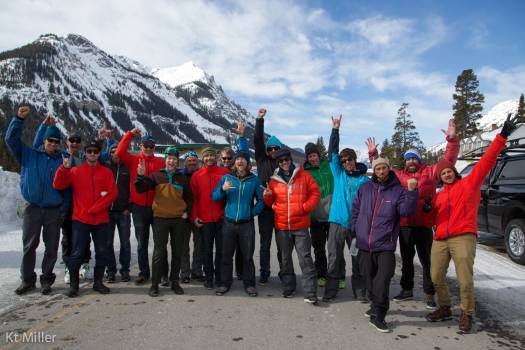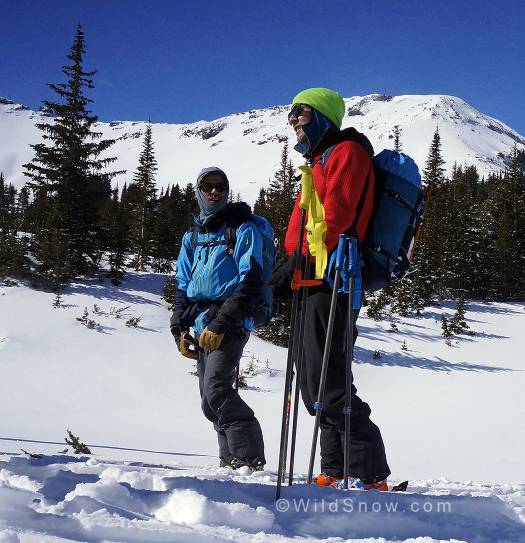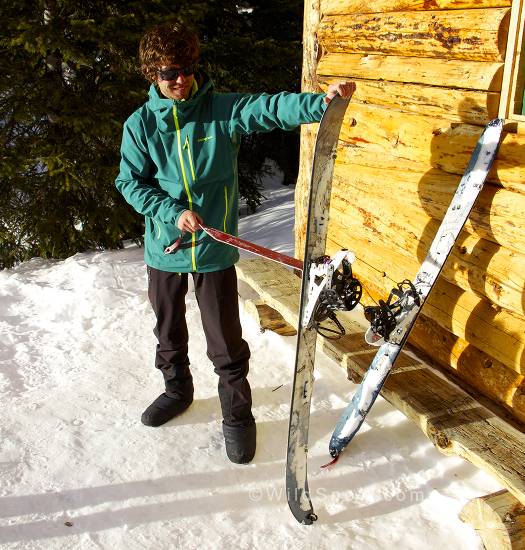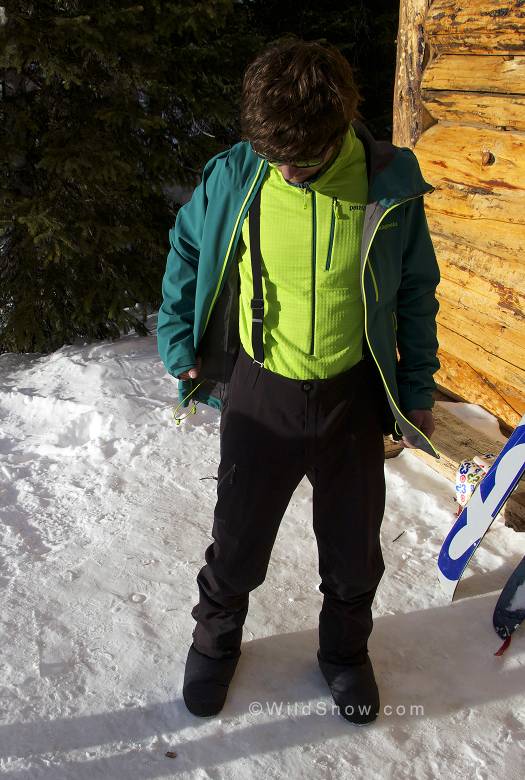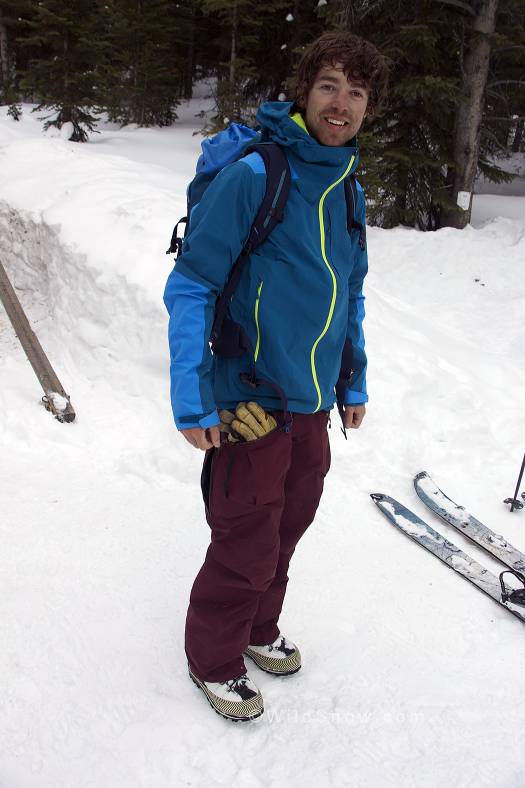Patagonia is a brand with a widespread presence in the outdoor world — always with deep roots in the mountain sports from alpine climbing to trail running. The line separating alpine climbing and backcountry skiing/riding is becoming increasingly blurry. Patagonia’s response to this trend is to come out with a new line of outwear that blends the sports, to create technical outwear for backcountry touring along a spectrum.
The spectrum ranges from “lift-accessed backcountry missions” to “pure alpine inspired missions.” Much of their current outerwear has been specifically designed for either/or, but obviously many of us have been using it for the range of activities anyways. The Backcountry Touring Line has many features of Patagonia’s alpine climbing line mixed with the features that pure snow-sliding enthusiasts want as well. During our Cooke City trip I had the opportunity to test every outwear kit combination (except the Super Alpine). Although it was a single day test on each kit, I can speak to fit, fabric functionality, and my overall opinion on the layers.
There are a lot of pieces of outwear to look at here, and my goal is to end this with my recommendation on the one kit in the quiver that will work across the board.
Weather during testing: Over four days of testing, we had single digit temperatures and windy conditions up high on the first day. The following daytime temperatures increased to the mid-teens to upper 20’s. No precipitation and mostly clear weather with consistent ridge-top winds.
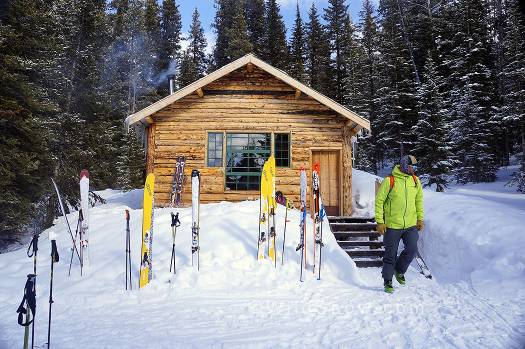
Josh Nielsen heads out for another day in the Refugative jacket and Kniferidge pants. He’s wearing XL.
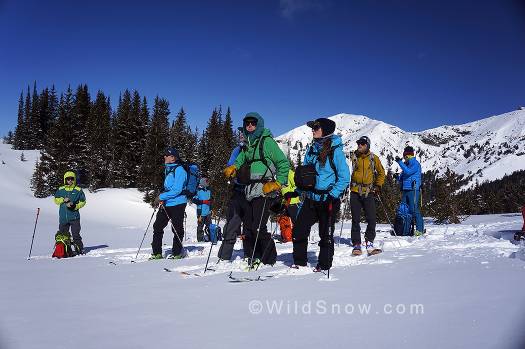
Reconnaissance jacket/pants, Kniferidge jacket/pants, Reconnaissance jacket/pants and Beau is wearing the Kniferidge jacket with a Powslayer jacket overtop.
Reconnaissance jacket and pants –- all-day wearable softshell
The Reconnaissance jacket and pants are made of a double-weave softshell with a bit of stretch. The jacket has the 3-layer waterproof fabric H2NO on the hood, shoulders, and forearms. Similarly, the pants have the same softshell fabric in the crotch and they are paired with the H2NO fabric in the lower cuff, and outer/upper thighs.
Features I like:
.
Cons:
.
Kniferidge jacket and pants – alpine fit softshell outwear
This is meant to be a skiing/snowboarding version of Patagonia’s current Knifeblade series meant for alpine climbing. Kniferidge jacket and pants are made of a 3-layer stretchy Polartec Power Shield. Translation Wilco? More weather protection than the Reconnaissance kit, and in my opinion less breathable. The big difference with the kniferidge is the overall fit. The material is quiet and incredibly comfortable, providing a lot of protection for the right environment.
Features I like:
.
Cons:
.
Refugative Jacket – lightweight 3-layer Gore-Tex protection
The Refugative Jacket is made of a 3-layer Gore-Tex fabric with a new Circular-Knit backing. The combo of the 3-layer and the C-knit backer makes it lighter and more breathable than Gore-Tex Pro-shell. Think of it as the middle ground between Gore-Active and Gore-Tex Pro (significantly more durable than Gore-Tex Active though). This jacket has a quiet feel and is very lightweight and packable.
Features I like:
.
Cons:
.
Pow-Slayer jacket and bibs –- storm skiing in the Pacific Northwest
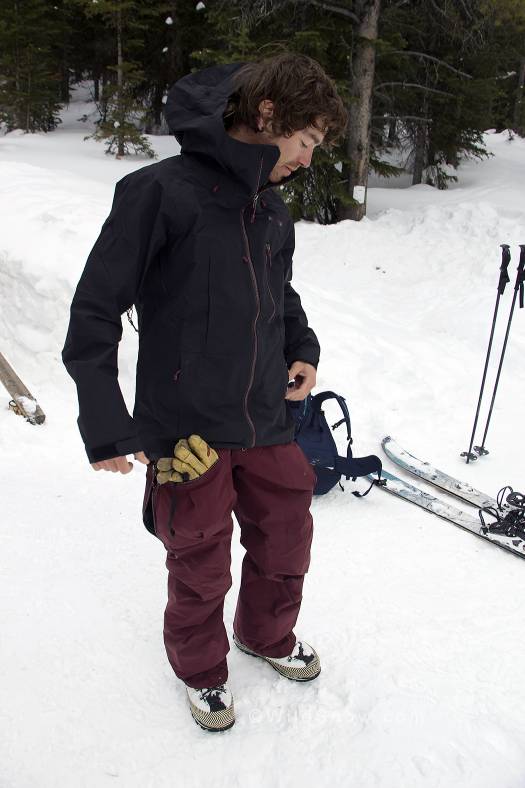
Pow-Slayer bib (medium) with the Pow-Slayer jacket (small). Definitely worth noting the size difference. The large thigh pockets are a winning feature for sure.
The Pow-Slayer kit is your classic 3-layer Gore-Tex Pro Shell fabric. Super durable, burly, and waterproof. The fit is definitely oriented towards free-riding, and less on the climbing side of things.
Features I like:
.
Cons:
.
Snowdrifter packs – 20L 30L and 40L
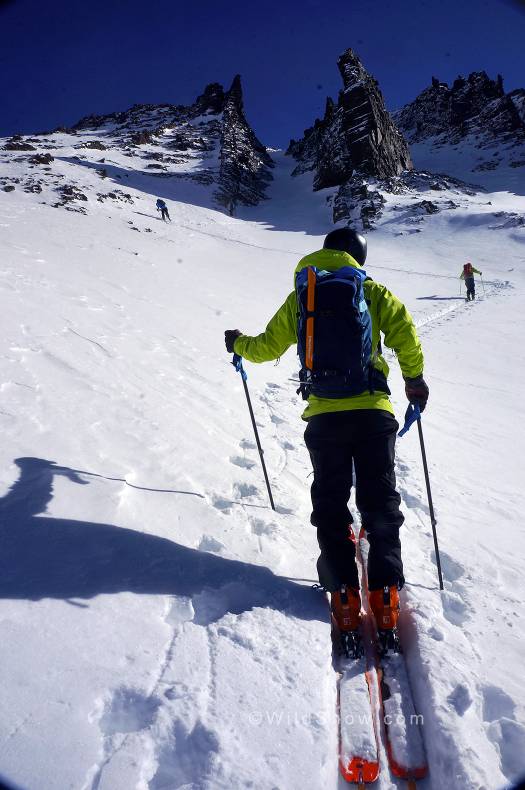
Glen utilizing a trimmed down version of the Snowdrifter 40L – removed lid, and frame sheet. Definitely a recommended pack!
Patagonia’s Snowdrifter Packs are functional and effective as day-tour, overnight or ski mountaineering packs. I had the opportunity to use the 40L and there are several features I like about it. All of the packs feature a dedicated rescue tool pocket, large zipper pulls, and a relatively minimal design. Additionally, all packs have an ice axe carrying sleeve, and vertical, A-frame, diagonal ski carry options. The 30L is the only pack with a back-panel access.
40L features I like:
.
Cons:
Overall – I think this will be my goto pack for short spring ski mountaineering trips. It carries well and has all the features I would be look for.
Overall
Feeling overwhelmed with so many options to choose from? Yeah I was too. Here are the questions you have to ask yourself: what climate do I spend most of my time in the winter? Am I strictly backountry touring, accessing from a lift, or am I primarily climbing technical routes for descents? I hope that with answers to those questions, the decision is relatively easy.
If you’re thinking it is unreasonable to add all of these pieces to your outwear quiver, than here is my personal opinion on what is the best combo. The combination of the Reconnaissance pants and jacket with the Refugative jacket for added protection from wind and precipitation are what I would consider the ultimate outwear quiver. With that said, there are drawbacks – mainly the lack of a bib. My personal experience with the Kniferidge kit was that it was too narrow of a fit – mostly a style preference – otherwise that may be the choice with the Refugative.
All of these items will be available for purchase at the end of September 2015.
Feel free to comment below with any further questions.
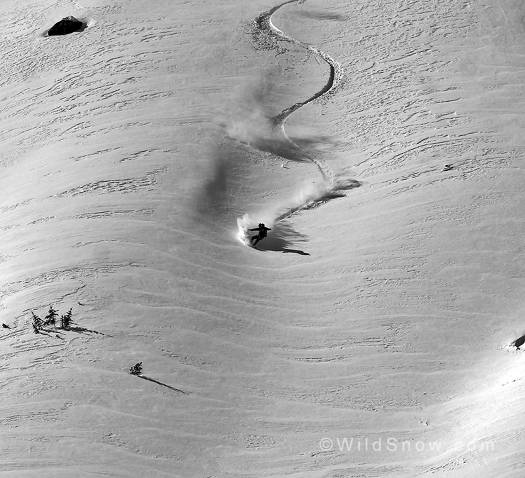
Now to leave you with a little more stoke to get out there. Thanks Beau Fredlund for grabbing a frame of enjoyment, because that’s ultimately what we are here for.

Jonathan Cooper (“Coop”) grew up in the Pacific Northwest and has been playing in the mountains since he was a teen. This was about the same time he made the fateful decision to strap a snowboard to his feet, which has led to a lifelong pursuit of powdery turns. Professionally speaking, he has been working as a ski guide, avalanche educator, and in emergency medicine for over a decade. During the winter months he can be found chasing snow, and passing on his passion for education and the backcountry through teaching avalanche courses for numerous providers in southwest Colorado, and the Pacific Northwest. Similarly, his passion for wilderness medicine has led him to teach for Desert Mountain Medicine all over the West. If you’re interested, you can find a course through Mountain Trip and Mountain West Rescue. In the end, all of this experience has merely been training for his contributions to the almighty WildSnow.com.

